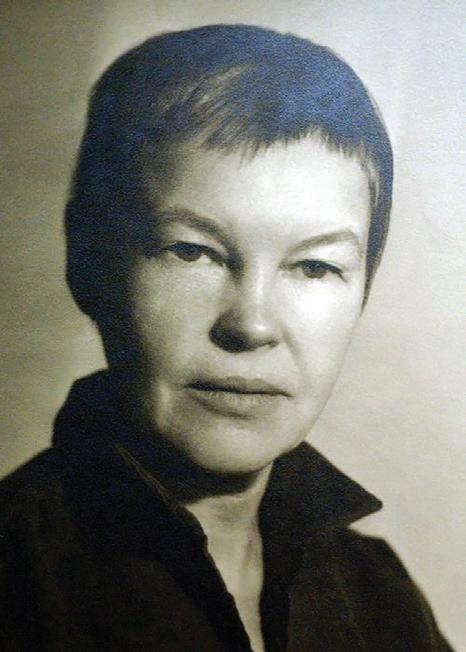
19 minute read
Interview
Swedish Alumni Taking On the World
Work-life balance, informal classroom settings and proximity to incredible nature are some of the main reasons international students choose Sweden, but Swedish academia can offer more than just a good time. Life Sciences, Engineering, IT, and Economics are some of the disciplines where Sweden stands out. Meet four Swedish university alumni who’ve succeeded in North America and beyond.
By Peter Berlin
Unlocking the Secrets of Parkinson’s and Cancer
Born in Umeå in Northern Sweden, Pernilla WittungStafshede studied Chemical Engineering at Chalmers University of Technology in Gothenburg. She spent her last year in the program at Imperial College in London, England. “There I developed my appetite for doing research, figuring out undiscovered things,” she says.
Pernilla returned to Sweden and started her PhD in Physical Chemistry at Chalmers, but her research soon took her to California Institute of Technology (CalTech) outside of Los Angeles. After two years, Pernilla was offered a position in the Chemistry Department at Tulane University in New Orleans. “Fortunately, my Swedish husband also managed to find a job in New Orleans. We lived there for 5 years, during which time I was promoted to full professor with tenure.”
One day, Pernilla organized a party for alumni from Chalmers who lived in America. One of them was a professor at Rice University in Texas. “He suggested I send them my c.v. My only experience of Texas in those days was watching Dallas on TV, and I wasn’t sure I wanted to live there. But soon afterwards Rice University contacted me and offered me a position in Houston, a city which is a real hub for research in many fields. I accepted the offer and my husband managed to secure a work transfer to Houston. We were there for 5 years, during which time our second daughter was born.”
After 12 years in America, Pernilla and her husband contemplated moving back to Sweden for the sake of their two daughters. “I heard that Umeå University was looking for professors in chemistry. I visited the university and fell in love with it. I also visited an elementary school and it all felt right.”
Eventually, Pernilla went full circle and returned to her alma mater. “After 7 years in Umeå, Chalmers approached me. They were starting a new department and wanted me to be the head of one of its divisions. The challenge of leading not just my own research group but a larger team appealed to me.”
Summarizing her research in her current position as professor at the Biology and Biological Engineering Department, Pernilla says: “I work on proteins, the body’s workhorses that in principle perform all functions. Proteins are long chains of amino acids. To function, these chains must fold into compact three-dimensional structures. My research focuses on how this folding process takes place and what can affect it. This is important as a lot of diseases are caused by proteins not folding correctly. Since my return to Sweden, I study more directly what
Pernilla WittungStafshede
Pernilla Wittung-Stafshede
happens when proteins fold the wrong way. There are several neurodegenerative diseases like Alzheimer’s and Parkinson’s where proteins fold in the wrong way and then stick together to form dangerous plaque in the brain. When we understand why folding goes wrong, we can develop drugs that counteract the process.”
At Chalmers, Pernilla is also head of Genie, which stands for Gender Initiative for Excellence. “Genie wants to create a better university by strategic female recruitments and improving the academic culture. Chalmers is dominated by men among both faculty and students. When I returned to Sweden, like most foreigners I thought the country was superior at gender equality. Indeed, Sweden is very good in many ways, but it has the same male dominance at top positions as the rest of the world. There is a lot of talking but nothing happens. I wanted action so I started Genie.”
Pernilla is a staunch advocate of students gaining international experience through conducting a part of their studies at a foreign institution. “You learn so much more than your subject of study – how to live in a different place and meeting new people. You mature a lot as a person and may develop contacts for the future.”
Why should North Americans consider studying at a Swedish university? “We maintain a high education standard. If you want to find out about Swedish culture and society, that is the way to do it. As an added bonus, everybody speaks English which makes life easier for a North American student – something which one cannot take for granted in other European countries.”
Johan Hultin
The Alarming Similarities Between the Spanish Flu and COVID-19
“I t is absolutely certain another pandemic will come, but we don’t knowwhat form it will have. The question is, how can we be forewarned?” Those omniscient words were spoken by pathologist Johan Hultin in a February 2002 interview, eighteen years before the outbreak of COVID-19. In search of answers, he set his mind on unlocking the genetic code of the 1918 Spanish flu pandemic which ravaged humanity in three successive waves.
In 1948, Johan Hultin entered Uppsala University to study medicine. However, the courses bored him so he spent much of his spare time arranging drinking contests with fellow students. Their alcohol-fuelled escapades caused considerable damage to University property. Hultin was summoned to the office of the Dean who threatened to expel him. With his Swedish career plans in doubt, he moved to the United States, was admitted to the University of Iowa, and graduated with an M.D. with a specialty in virology.
Hultin was fascinated by potentially fatal influenza viruses. The most notable pandemics in modern time include the 1918 Spanish flu. This flu was devastating, possibly killing up to 100 million people worldwide, including Inuit communities in the Arctic.
He reasoned that our ability to defeat influenza viruses with the help of targeted vaccinations depends on our understanding of their molecular make-up. Since influenza usually affects the lungs, Hultin estimated that his best chances of collecting well-preserved lung tissue samples would be to dig up Inuit victims of the 1918 pandemic buried in the permafrost of the Arctic. In 1951 he set out on an expedition to Alaska. There, he met Inuit leaders who gave him permission to excavate. He found what he was looking for and brought lung tissues back to Iowa City. Unfortunately, subsequent analysis showed that too much time had passed for the tissue samples to be of any use.
In 1997, Hultin decided to have another go at retrieving well-preserved lung tissue from Spanish flu victims. Once again he travelled to Alaska, visiting the same excavation site as in 1951. This time he found the body of an obese 30-year-old woman whose body fat had helped to preserve her lungs in pristine condition. He and his fellow researchers now had enough material to sequence the complete 1918 virus and establish its similarities with viruses in subsequent pandemics. By solving the riddle of the Spanish flu, Hultin has been instrumental in our ability to fight the coronavirus today.

Johan Hultin. Photo: Stephan Elleringmann/SI
Mikael Dolsten
The Swede Behind the Pfizer COVID-19 Vaccine
Lund University alumnus Mikael Dolsten is the Chief Scientific Officer at Pfizer in the United States. Pfizer is, of course, the American pharmaceutical company that launched one of the first fully certified vaccines against COVID-19 in the fall of 2020. As Head of Research, Dolsten has been the “conductor of the symphony orchestra” that pulled all the necessary resources together to develop the vaccine in less than a year – a process that would normally require a decade.
Much has been written about the fact that the Pfizer vaccine has to be stored at a very cold temperature. Compared to other COVID-19 vaccines, this is a drawback when it comes to distributing it to remote communities, especially in the developing world. However, one advantage of the Pfizer vaccine is that it can readily be used as a booster if a person’s immunity begins to wear off. Another advantage is that it can be quickly adapted for maximum effectiveness against new strains of the virus. This is so because it is based on so-called mRNA, a molecule that may be processed and edited.
Dolsten grew up in Halmstad in the south of Sweden. He went on to study medicine at Lund University, obtained a PhD in cancer immunology, and was eventually appointed Adjunct Professor. In parallel he worked for the Swedish pharmaceutical companies Pharmacia and Astra. Pharmacia was later bought by Pfizer, and Astra became UK-based AstraZeneca.
In 2004, Dolsten and his family settled for good in the United States. While at Pfizer, he served as scientific advisor to the Obama administration’s task force for improving regulatory and drug development, as well as to VP Biden for the coordination of cancer research. He holds dual Swedish-US citizenship.
During his time as a young researcher at Lund, he was granted a scholarship which enabled him to travel abroad and gain experience of international research.
“That is something I am grateful for today,” he stated in an interview. “As a researcher you are part of a global knowledge community and need to get impressions of how others work, learn new techniques and gain new approaches. Travel scholarships are a tremendous investment in young researchers.”
Mikael Dolsten spent 20 years in Lund, and the southern Swedish city has always occupied a special place in his heart. He therefore did not need much persuasion to accept a recent invitation to return to his Alma Mater, despite his heavy workload at Pfizer. As of January 1, 2021, he is a Visiting Professor at the University, intent on sharing his knowledge not only in research but also in the best ways to manage innovation and create entrepreneurial structures, so as to maximize the practical benefits of the research.

Pfizer-BioNTech COVID-19 vaccine Mikael Dolsten. Photo: Pfizer

Johan Skog
Listening to the Tweets of Exosomes
With trillions of dollars having been spent on cancer research over time, it seems surprising that there still no reliable and non-invasive method of detecting cancer during routine health check-ups. Cancer is diagnosed only when some seemingly unrelated symptom – maybe abdominal pain or a persistent cough – causes a person to seek medical advice, and then often too late for a permanent cure. Surely, the day will come when a simple blood or urine test could reveal the onset of cancer anywhere in the body without the need for a costly MRI scan or an invasive biopsy of human tissue?
Well, that day may be getting closer thanks to a revolutionary discovery by Swedish cell biologist Johan Skog. In 2005, Dr Skog earned his PhD in Virology while doing research at Umeå University in northern Sweden. The following year he joined the Harvard Medical School in Boston to develop a gene therapy method for treating brain tumours. In the process, he became an expert on so-called exosomes, small packages released by cells into the blood stream and other body fluids such as urine. These packages contain various molecular constituents of their cell of origin, including proteins and ribonucleid acid (RNA).
Working late one night in the laboratory, Dr. Johan Skog found that these exosomes included RNA from cancer. RNA is the “language of cells”, and the tiny exosome packages act as a means of communication between the cells, somewhat akin to Twitter messages. Eavesdropping on the tweets makes it is possible to detect a cancer and its origin early, and also to observe how it is changing over time. By taking regular blood and urine samples from people and singling out the exosomes, proper treatment can be initiated before the disease has had a chance to grow and spread.
Johan Skog obtained a patent for his discovery and started the company Exosome Diagnostics with initial focus on detecting prostate cancer. Currently, this type of cancer is the fifth most common cause of death among men in the USA
Early prostate cancer is typically diagnosed almost by accident if a person’s blood test happens to include a measurement of prostate-specific antigen (PSA). However, the PSA method is unreliable to the point where it sometimes leads to MRI scans and biopsies being performed unnecessarily.
For Exosome Diagnostics, detecting and monitoring prostate cancer is only the first step towards the goal of providing a more universal diagnostic tool. Johan Skog has handed over the day-to-day management of the enterprise to colleagues and is now working in the company’s laboratory as Chief Scientific Officer. His ambition is to expand the usefulness of his discovery to include other forms of cancer.

Exosome Diagnostics was founded in 2008 by Johan Skog. Photo: Exosome Diagnostics Johan Skog. Photo: Johan Gunséus /Tidningen Curie

Hyllad ”svensk” poet i USA – okänd i Sverige
Av Lars Sönnergren
May Swenson heter en i USA uppmärksammad poet. Svensk till ursprunget, men så gott som okänd här i vårt land. Nu ska hennes barndomshem i delstaten Utah bli en kulturell samlingspunkt.
Mays far hette Dan Arthur Swenson och var född i Osby i Skåne 1880. Han emigrerade till Amerika, frälstes och blev mormon. Dan återvände till Sverige som missionär. Han fann sin blivande maka Anna Margaret Elizabeth Hallberg, född 1889 i Eskilstuna. De bosatte sig i Amerika i universitetsstaden Logan – i dag med drygt 51 000 invånare – i delstaten Utah, vilken präglas av de många mormonerna. Dan Swenson blev lärare i mekanik vid universitetet. 1913 föddes Anna Thilda May Swenson, som det första av tio barn. I hemmet talades svenska och May Swenson kom riktigt i kontakt med det engelska språket först när hon började skolan. Vid 13 års ålder började hon känna sig som familjens svarta får, då hon ifrågasatte den mormonska tron. May kom snart att förstå att hon var lesbisk. Hon började skriva dikter och annat för sig själv. Skrivandet var ett sätt att få ge uttryck för sina känslor. Någonstans skrev hon ”Jag är två ögon instängda i en pansarutrustning. Jag skriver för att jag inte kan tala”.
Kontakt med Tranströmer
Men olikheterna ledde inte till att hon bröt med sin familj. Hon såg positivt på sin uppväxt och skrev ”Var det verkligen bara en sommar då jag var tio år?” Hon skulle få mycket beröm för sin lyriskt uttrycksfulla stil. Artikelförfattaren har dock inte kunnat hitta någon av hennes böcker i något svenskt bibliotek. Ändå var det nära att hon kunde ha blivit översatt – av den svenska poeten Tomas Tranströmer. Hon var bland de första att översätta Tomas Tranströmers lyrik till engelska. – Ofta var det så att Tomas sedan översatte till svenska dem som översatte honom, men samarbetet mellan dem fortsatte inte, berättar Monika Tranströmer, Tomas fru.
Varför inte samarbetet med May Swenson fortsatte vet Monika Tranströmer egentligen inte. Tomas uppfattade May Swenson som självständig, men det var inget som störde honom. Frågor om någons sexuella läggning var inte sådant som uppkom så ofta i mitten av 1900-talet. Från litteraturen, hur många svenskar kan redogöra för våra författares sexuella läggning, undantagandes Karin Boyes?

Flyttade till New York
Och att May Swenson inte då blev översatt, anser heller inte Monika Tranströmer så underligt. Hur många amerikanska poeter lyckades ta steget över Atlanten under 1950-, 1960- och 1970-talen? Alltså under May Swensons aktiva tid. Långt före internet.
Vad Monika Tranströmer vet besökte heller aldrig May Swenson Sverige. Via tidningsjobb i Salt Lake City kom May Swenson i 20-årsåldern så småningom till New York och bodde bland annat i stadsdelen Greenwich Village, känd för sina många bohemer och konstnärliga personer. Amerikanske radiopersonligheten Garrison Keillor, som på internet varje dag skriver The Writer’s Almanac, tror att flyttet till storstaden New York var Mays enda chans att få leva som lesbisk. Garrison Keillor skriver varje dag något om kända amerikanska författare på deras födelsedag. Och den 28 maj uppmärksammade


och omnämnde han just May Swensons författarskap och livsöde. Väl ett tecken på att ”svenskan” blev och är känd i USA.
450 publicerade dikter
Ett annat tecken – när skolan Brattleboro Union High School i Vermont i höstas höll konsert ingick en tonsatt dikt av May Swenson – I will be earth. You be the flower. Ungefärligen översatt Jag är jorden. Du är blomman. Alltså en klar kärleksdikt. Men efter ungdomsflytten till östra USA skulle det dröja innan hon debuterade. Det skedde först när hon var 41 år 1954 med boken Another animal.
Tomas Tranströmers av henne och Leif Sjöberg översatta dikter kom ut i USA 1972. Engelska Wikipedia tar upp titeln på tio poesiböcker hon skrev samt en prosabok. Hon fick en mängd utmärkelser under sin författarbana. Typiskt för hennes okändhet i Sverige är att det hos engelska Wikipedia inte finns någon hänvisning till svenska Wikipedia – bara till italienska Wikipedia! Och redaktörerna där har hittat fler verk av May Swensons hand än de engelska redaktörerna. Hon lär ha fått 450 dikter publicerade. En del uttrycksfulla kärleksdikter publicerades först efter hennes död.
Var hon en bra poet? Är det en förlust att hon inte översatts till vårt språk? Sannolikt – men det kan inte en amatör som artikelförfattaren slutgiltigt bedöma. Den som själv vill avgöra detta kan höra och se May Swenson själv i filmer på Youtube samt dikter där inlagda av beundrare så sent som för några år sedan. På webbsidan Poets.org karaktäriseras hon och beundras för sin lek med ord samt erotiska livsglädje. Hon får omdömet att ha haft inflytande på 1900-talets amerikanska författare. På Poetryfoundation.org finns fler av hennes dikter.

Hyllas i hemstaden
Hemma i Utah utdelas sedan några år ett litterärt pris till hennes minne. Nu har man börjat samla in pengar för att kunna återuppbygga hennes barndomshem. Det ska bli en kulturell och litterär samlingspunkt. Den som tar sig till Utah och besöker hennes hemstad Logan kan gå The May Swenson poetry path, det vill säga ”May Swensons poetiska stig”, utlagd av universitet där. Man får se betydelsefulla platser under hennes uppväxt. Hennes poem finns att läsa på olika håll längs stigen. Till slut kommer man fram till May Swensons grav. Hon dog 1989.
How To Be Old – May Swenson . t ,
It is easy to be young, (Everybody is, at first.) It is not easy to be old. It takes time. Youth is given; age is achieved. One must work a magic to mix with time in order to become old.
Youth is given. One must put it away like a doll in a closet, take it out and play with it only on holidays. One must have many dresses and dress the doll impeccably (but not to show the doll, to keep it hidden.)
It is necessary to adore the doll, to remember it in the dark on the ordinary days, and every day congratulate one's aging face in the mirror.
In time one will be very old. In time, one's life will be accomplished. And in time, in time, the doll–like new, though ancient–will be found.
t t t
Summary in English: May Swenson was an American poet who grew up in a Swedish immigrant family in Logan, Utah. Paradoxically, she and her works are well-known in America but virtually unknown in Sweden. She translated Swedish poet Tomas Tranströmer’s poetry to English, but their plans to have him translate her works to Swedish fell through for unknown reasons. May and her parents went through difficult times when at a young age she questioned their Mormon faith and it transpired that she was lesbian, but they remained close nonetheless. She died in 1989. Plans are under way in Logan to restore her childhood home which will serve as a cultural and literary venue.
Book
A Silenced Voice: The Life of Journalist Kim Wall
Reviewed by Peter Berlin
Peter Madsen was a Danish space enthusiast and amateur builder of a submarine. On August 10, 2017 he committed one of the most bizarre crimes in Scandinavian history. Kim Wall, a 30-year-old Swedish freelance journalist, boarded the submarine in Copenhagen intending to interview Madsen. The last photo of Kim shows her silhouette against the evening sky as she stands on the submarine’s tower.
When Kim failed to return that night, her boyfriend contacted the police. The next day the crew of a pleasure boat rescued Madsen whose submarine had begun to sink. There was no sign of Kim. A few days later a woman’s torso was found washed up on the beach of Öresund. DNA testing linked it to Kim Wall.
In the weeks that followed, police divers recovered the rest of her dismembered body. Madsen was arrested, suspected of murder. During interrogation he stated that the heavy hatch cover of the submarine’s tower had accidentally collapsed on her head and killed her. Later he changed his story, claiming that she had suffocated from engine exhaust poisoning while she was inside the vessel and he was outside. Discovering her in a lifeless state, he tried to lift her out in order to bury her at sea but found her to be too heavy, which is why he dismembered her. In a subsequent psychiatric report he is quoted as saying: “What do you do if you have a big problem? You divide it up into smaller ones, of course.”
Forensic analysis of Kim’s body found no evidence of trauma to her head, nor of engine exhaust poisoning. Eight months after the ill-fated submarine voyage, Madsen was sentenced to life in prison, charged with crimes including murder and aggravated sexual abuse.
A Silenced Voice, written by Kim’s parents in 2018 and translated to English in 2020, contains a detailed timeline of events that led up to her murder; it also covers the subsequent police investigation and court proceedings. The emotionally charged chapters alternate with flashbacks to Kim’s childhood, her teens, her academic achievements at the London School of Economics and Columbia University, and her reporting from some of the world’s political hotspots.
Her parents could have been forgiven for posthumously embellishing their daughter’s accomplishments in academia and on the world stage but, professional journalists themselves, they succeed in conveying a sense of truthful objectivity. The reader comes away with an image of Kim Wall as an extraordinarily talented, inquisitive, courageous, compassionate and beautiful young woman who held strong convictions and built deep friendships wherever she went. In her journalistic endeavors she lent a voice to the suppressed and humiliated, be it defeated Tamil women warriors in Sri Lanka, torture victims in Idi Amin’s Uganda, muzzled citizens of North Korea, or inhabitants of the Marshall Islands still suffering from radiation exposure since the American post-war nuclear bomb tests.
Her appetite for adventure trumped any fear of danger that she might have felt during her travels. It was her fearlessness that made her board Peter Madsen’s submarine alone – and she paid for it with her life.



Photo: Reuters/Peter Thompson
A Silenced Voice: The Life of Journalist
Kim Wall By Ingrid and Joachim Wall, translated from Swedish by Kathy Saranpa. Published by Amazon Crossing, Seattle 2020. 147 pages. ISBN 978-1542018111 (hardcover).







